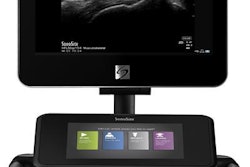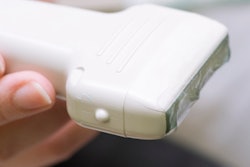Evaluating patients in early shock with point-of-care ultrasound (POCUS) can yield nearly $20,000 in cost savings, according to research scheduled to be presented at the upcoming Chest World Congress in Shanghai.
A research team from Legacy Good Samaritan Hospital in Portland, OR, found that patients in early shock who were evaluated with point-of-care ultrasound spent less time being treated with vasoactive medications. They also reported a trend toward fewer days spent in the intensive care unit (ICU), as well as decreased morbidity.
The controlled, retrospective cohort study involved 45 patients: 22 who received point-of-care ultrasound and 23 who did not. For those receiving POCUS, a compact unit from Fujifilm SonoSite was used to calculate respiratory variations in inferior vena cava (IVC) diameter and the change in left ventricular outflow tract (LVOT) velocity-time integrals (VTI) before and after straight leg-raising. The researchers used cutoff values of 18% for IVC variation for patients on mechanical ventilation and 12% for VTI to predict if a patient would be responsive to volume resuscitation.
Fluids were administered to patients predicted to be responsive to volume resuscitation, while vasopressors were preferred in those patients who were not predicted to be fluid-responsive, according to the group led by Dr. Daniel Mitchell.
| Impact of POCUS on therapy | |||
| POCUS group | Control group | p-value | |
| Total hours on vasopressors | 36.43 | 58.57 | 0.038 |
| Hours to 50% wean off vasopressors | 22.24 | 40.66 | 0.0952 |
| Total hours on ventilator | 68.3 | 133.67 | 0.283 |
| Days in ICU | 4.41 | 6.67 | 0.2 |
The POCUS group spent 38% less time on vasopressor medication, a difference that was statistically significant. There were trends toward improvement in other therapy milestones such as hours to wean off vasopressors, total hours spent on ventilators, and days in the ICU, although the latter three were not statistically significant.
The researchers concluded that the decreased morbidity and calculated cost savings of around $20,000 per patient from the use of point-of-care ultrasound "could be very significant."



















